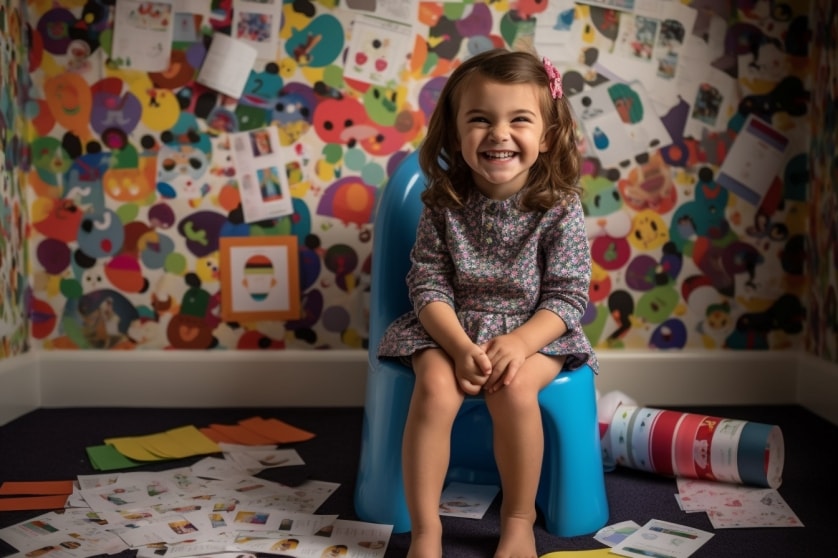Table of Contents
ToggleHow to Afford a Baby: Tips for Staying on Budget
Welcome to the ultimate guide on how to afford a baby without breaking the bank! If you’re a soon-to-be parent, you’re probably feeling a mix of excitement and nervousness. You can’t wait to welcome your little one into the world, but at the same time, you’re worried about the financial burden that comes with raising a child. Don’t worry; you’re not alone. According to the latest statistics, the average cost of raising a child from birth to age 18 is a staggering $233,610! But fear not, because we’re here to help you navigate this daunting task with ease.
As one of the top 10 most successful woman family care bloggers, I’ve seen it all. I’ve talked to countless parents who have struggled with the financial aspect of raising a child, and I’ve learned a thing or two about how to save money without compromising on quality. In this article, we’ll explore five practical tips on how to afford a baby without sacrificing your lifestyle.
Firstly, it’s essential to create a budget. As boring as it sounds, it’s the foundation of financial stability. You can’t manage what you don’t measure, so make sure you’re aware of all the expenses that come with a baby. Secondly, consider buying second-hand items. You’d be surprised at how much you can save by purchasing gently used baby gear. Thirdly, make your own baby food. Not only is it healthier, but it’s also cheaper than buying pre-packaged baby food. Fourthly, consider using cloth diapers instead of disposable ones. It’s better for the environment and your wallet. Lastly, don’t be afraid to apply for government assistance programs if you need it. There’s no shame in asking for help when you need it.
With these tips in mind, you’ll be well on your way to affording a baby without the stress and worry that often comes with it. Let’s dive in!

1. Create a Budget
Let’s face it, budgeting can be a drag. But when it comes to having a baby, it’s an absolute necessity. You don’t want to be caught off guard by unexpected expenses, so it’s essential to create a budget and stick to it.
The first step is to track your current expenses. You can do this by using an app like Mint or by keeping track of your receipts and bills. Once you know where your money is going, it’s time to start planning for baby expenses. Start with the essentials: diapers, wipes, formula (if you’re not breastfeeding), clothing, and gear. These are the items that you’ll need from day one.
Next, consider the long-term expenses. You’ll need to budget for medical bills, childcare (if both parents are working), and education expenses. It’s never too early to start saving for your child’s future education, so consider opening a college savings account.
It’s also important to budget for unexpected expenses. Emergencies happen, and you don’t want to be caught off guard. Set aside a small amount each month for unforeseen expenses like car repairs or medical bills.
When creating your budget, it’s important to be realistic. Don’t set unrealistic expectations for yourself or your family. Remember, you’re not trying to live like you’re in poverty, but you’re trying to be mindful of your spending and save money where you can.
Finally, make sure to review your budget regularly. Your baby’s needs will change as they grow, and your budget will need to adapt accordingly. Review your budget each month to ensure you’re on track and adjust it as needed.
- Track your current expenses
- Budget for essentials
- Budget for long-term expenses
- Budget for unexpected expenses
- Be realistic
- Review your budget regularly
Creating a budget may seem daunting at first, but it’s an essential step in affording a baby. By tracking your expenses, budgeting for essentials and long-term expenses, and being mindful of your spending, you’ll be well on your way to financial stability. Plus, with the money you save, you can splurge on a few cute baby outfits!

2. Buy Second-Hand Items
When it comes to buying items for your baby, it can be tempting to go all out and splurge on the latest and greatest gear. But the truth is, babies grow quickly, and many items are only used for a short period. That’s why buying second-hand items is a great way to save money.
Firstly, consider checking out local second-hand stores and consignment shops. You can often find high-quality baby items for a fraction of the cost of new items. Some stores even offer credit for trading in your gently used items, so you can keep the cycle going.
Another option is to buy items online. Websites like Facebook Marketplace, Craigslist, and OfferUp are great resources for finding second-hand baby items. Before buying, be sure to ask the seller questions about the item’s condition and check for any recalls or safety issues.
When buying second-hand items, it’s important to prioritize safety. While it’s tempting to buy a used car seat or crib, it’s essential to make sure that the item is still in good condition and has not been recalled. Always do your research and double-check the item’s safety record before making a purchase.
- Check local second-hand stores and consignment shops
- Buy items online
- Ask questions and check for recalls
- Prioritize safety
Buying second-hand items is not only a great way to save money but also a sustainable choice. By purchasing used items, you’re helping to reduce waste and prevent items from ending up in landfills.
Plus, there’s something satisfying about finding a great deal on a gently used baby item. You’ll feel like a savvy shopper and proud parent all at once.
So next time you’re in the market for baby gear, consider buying second-hand. You’ll save money and feel good about making an eco-friendly choice.

3. Make Your Own Baby Food
Baby food can be expensive, especially if you opt for the organic, premium options. But did you know that making your own baby food can be easy and affordable? Not to mention, it can give you peace of mind knowing exactly what your baby is eating.
The first step to making your own baby food is to invest in a good quality blender or food processor. Once you have the right equipment, you can start by steaming or roasting vegetables and fruits until they’re soft. Then, simply blend the ingredients until they’re smooth and add a little water or breast milk to achieve the desired consistency.
Making your own baby food doesn’t have to be time-consuming, either. You can batch cook and freeze portions in ice cube trays for quick and easy meals. This method allows you to have a variety of homemade options readily available, without the added expense of store-bought jars or pouches.
Not only is making your own baby food cost-effective, but it can also be a healthier choice. Many store-bought options contain preservatives, additives, and high levels of sugar and sodium. By making your own, you can control exactly what goes into your baby’s food.
- Invest in a good quality blender or food processor
- Steam or roast fruits and vegetables
- Blend ingredients and add water or breast milk
- Batch cook and freeze portions
- Control the ingredients and avoid preservatives
Another benefit of making your own baby food is that you can introduce your little one to a variety of flavors and textures. You can experiment with different fruits, vegetables, and spices, which can help your baby develop a diverse palate and enjoy a wider range of foods as they grow older.
While making your own baby food can seem intimidating at first, it’s worth trying. Not only will it save you money in the long run, but it can also be a fun and rewarding experience. So grab your blender and start cooking up some delicious and nutritious meals for your little one.

4. Consider Cloth Diapers
Diapers are one of the most significant expenses you’ll face as a new parent. Disposable diapers are incredibly convenient, but they can also be expensive. While cloth diapers require a more significant upfront investment, they can be much cheaper in the long run.
Here are some things to consider when thinking about using cloth diapers:
- The cost: While cloth diapers may seem expensive upfront, they can save you a lot of money in the long run. It’s estimated that parents can save up to $2,000 by using cloth diapers instead of disposable ones.
- The environmental impact: Disposable diapers are not biodegradable and can take up to 500 years to decompose in a landfill. Cloth diapers, on the other hand, can be washed and reused, making them a more environmentally friendly option.
- The convenience: Cloth diapers do require more work than disposable ones. They need to be washed, dried, and folded. However, many parents find that the extra work is worth it for the savings and environmental benefits.
- The fit: Cloth diapers come in many different styles and sizes, so it may take some trial and error to find the ones that work best for your baby. Some parents also find that cloth diapers are bulkier than disposable ones, which can make it harder to find clothes that fit.
- The maintenance: Cloth diapers require more maintenance than disposable ones. They need to be washed and dried regularly, and you may need to use special detergent to avoid damaging them. However, many parents find that the extra work is worth it for the savings and environmental benefits.
lessCopy code
Overall, cloth diapers can be a great way to save money and reduce your environmental impact. While they require more work than disposable diapers, many parents find that the extra effort is worth it. Consider trying a few different types of cloth diapers to see which ones work best for your baby and your family’s needs.

5. Apply for Government Assistance Programs
Government assistance programs are designed to help low-income families afford the basic necessities of life, including food, housing, and healthcare. These programs can be a valuable resource for families with young children, as the cost of raising a child can be quite high.
There are several government assistance programs that families with young children may be eligible for:
- Supplemental Nutrition Assistance Program (SNAP): Formerly known as food stamps, SNAP provides low-income families with funds to purchase food. This program can be especially helpful for families struggling to afford the cost of feeding their new baby.
- Women, Infants, and Children (WIC): WIC provides low-income pregnant and postpartum women, as well as infants and young children, with supplemental nutrition assistance, including healthy food and formula.
- Temporary Assistance for Needy Families (TANF): TANF provides cash assistance to low-income families with children, as well as job training and other support services to help families become self-sufficient.
- Childcare Assistance: Many states offer childcare assistance to low-income families, which can help offset the cost of daycare or other childcare expenses.
- Medicaid: Medicaid is a government-funded healthcare program for low-income families. This program can help cover the cost of prenatal care, childbirth, and other medical expenses associated with having a baby.
If you think you may be eligible for any of these programs, it’s important to apply as soon as possible. The application process can be lengthy, so it’s best to start early to ensure that you receive the assistance you need when you need it most.
Keep in mind that eligibility requirements and benefits can vary by state, so it’s important to check with your state’s Department of Health and Human Services or social services agency to learn more about the programs that are available in your area.
While government assistance programs can be a valuable resource for families with young children, it’s important to remember that they are meant to be a temporary solution. The ultimate goal is for families to become self-sufficient and no longer need government assistance.
By combining government assistance programs with the other tips in this article, you can help ensure that your family is able to provide for your new baby without breaking the bank.
Conclusion: You Can Afford a Baby on a Budget!
Congratulations! You’ve made it to the end of our guide on how to afford a baby on a budget. While bringing a new life into the world can be an exciting time, it’s important to remember that it can also be a challenging time financially. However, with a bit of planning and smart choices, you can provide for your little one without breaking the bank.
Let’s recap some of the key takeaways:
- Create a Budget} – A budget is your roadmap to financial success, and creating one early on in your pregnancy will help you stay on track.
- Buy Second-Hand Items} – Second-hand baby gear can save you a ton of money, and with a little bit of effort, you can find high-quality items that are still in great condition.
- Make Your Own Baby Food} – Homemade baby food is not only more affordable than store-bought options, but it’s also healthier and more eco-friendly.
- Consider Cloth Diapers} – Cloth diapers may seem like a daunting task, but they’re more cost-effective and environmentally friendly than disposable diapers in the long run.
- Apply for Government Assistance Programs} – There are various government assistance programs available that can help you with the cost of having a baby, from food assistance to childcare subsidies.
Remember, every little bit counts when it comes to saving money. By making small changes and being mindful of your spending, you can provide for your baby while also staying on budget. Don’t be afraid to get creative and think outside the box!
Finally, enjoy this exciting time with your new bundle of joy. While finances are important, nothing is more valuable than the love and joy that a new baby brings into your life.
Good luck and happy parenting!
Want to take your knowledge to the next level? Check out these must-read articles:
- Managing the Costs of Parenthood: A Guide for New Parents
- Saving for the Future with a Growing Family: Strategies for Success
Organize your baby’s wardrobe with our baby clothes closet organizer products! Our organizers are designed specifically for baby clothes. Get your baby’s clothes neat and tidy with our selection of organizers – shop now!
Hey there, are you craving a fresh perspective? Look no further! Feast your eyes on the awesome video below:
Beyond her professional achievements, Jessica is also a successful mother to a large and thriving family. Her firsthand experience in balancing financial responsibilities while raising multiple children gives her a unique perspective that resonates with her audience. As a mother, Jessica understands the financial challenges and pressures faced by families, and she brings a compassionate and relatable approach to her blogging. Through her blog, Jessica not only shares her financial expertise but also provides invaluable insights on how to foster financial well-being while building a strong and harmonious family foundation. Whether it's budgeting, saving for college, or teaching children about money, Jessica's relatable stories and practical tips make her an indispensable guide for individuals striving to achieve financial stability while nurturing a fulfilling family life.
- First Birthday Philosophy: Meaningful Celebrations Without Excess - July 1, 2025
- Financial Planning for New Parents: Securing Your Family’s Future - June 16, 2025
- Registry Reality Check: Veteran Parent Wisdom - April 3, 2025



